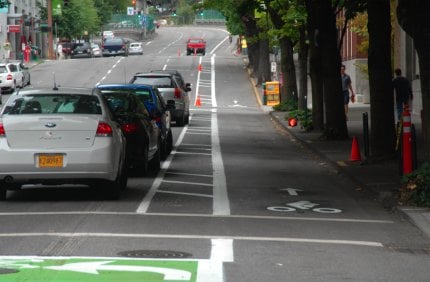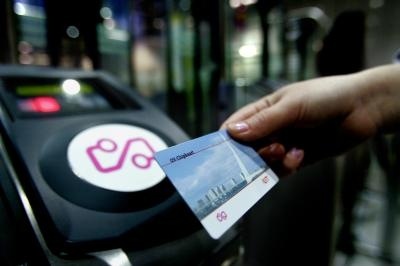Something they figured out long ago in the Netherlands is that the safest way to design roads is to physically separate the various types of users. Hence the ubiquity of cycle-tracks. This not only reduces conflict between vehicles, bikes, and pedestrians, but it actually improves traffic flows in many cases.
Upon returning to Portland, there have been several instances where I've been riding the bus and the driver has had to wait for several cyclists to pass on the right in the bike lane in order to get over to the stop, then wait again to merge back into traffic. This is especially bad on streets like Hawthorne between SE Grand and SE 12th Ave, where traffic in all forms is high.
More than an inconvenience, it's a safety issue for cyclists. Having buses constantly going in and out of your lane isn't exactly ideal for things like "not getting hit" and "living" and such. Cycle-tracks would indeed be ideal to address the issue, but Portland has been somewhat slow to invest in them, as these are the only two of any significance in the city:
 |
| Raised cycle track on SW Moody (Image from swmoodyproject.com) |
 |
| First cycle track in Portland, on SW Broadway (Image from bikeportland.org) |
A full blown cycle-track is not the only option, however. While the current configuration might look like this (and please forgive my lack of graphic design skills):
It would be a huge yet relatively simple improvement to do something like this:
It would require installation of a concrete island with curb cuts for wheelchair access, but in my mind the increased safety and reduced delays for both bus riders and bikers justify the expense. Drivers, of course, might experience more delays due to being stuck behind buses loading and unloading passengers, but I don't claim to want to make things better for drivers (even when I'm one of them). Besides, it really wouldn't be that much worse than the current situation for them since drivers are impacted by the constant weaving of buses and cyclists.
Update (Aug 15, 2012): My good friend (and Dear Leader) Derek Abe enlightened me to the fact that there is actually a legitimate cycle track on NE Cully in addition to the two I mentioned here.





















